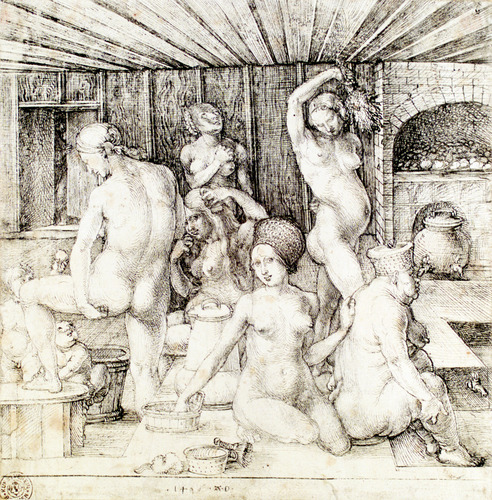#albrechtdurer
Study of Hands, 1506,Albrecht Dürer
Medium: pen,ink,paperhttps://www.wikiart.org/en/albrecht-durer/study-of-hands-1506
Post link
Betohem se per nje moment , ishim infinit … ❤
Imagjino te punosh ne sex shop dhe ti thuash njerezve “merre kte dhe fute ne bythe” pa e ndruajtur fare. Literally dream job
The woman clothed with the sun and the seven headed dragon, 1511,Albrecht Dürer
Medium: woodcut
Post link
MUSEUM SECRETS: A Miniature Masterpiece


“At first glance, we might assume that this copy of a German print belongs in the Ashmolean’s collections of European art. But no. This is an Indian drawing, and is housed here in the Eastern Art department. And it’s not just any Indian drawing, but one of the greatest of the Mughal Empire."
In the series 2 finale of our Museum Secrets podcast, Keeper of Eastern Art Mallica Kumbera Landrus introduces us to the child genius behind this tiny drawing. This piece of paper, only 10cm high, tells a story of cultures embracing each other across vast distances and the curiosity of one exceptional 13-year-old boy in Mughal India, 421 years ago.
Listen to ‘A Miniature Masterpiece’ here, or wherever you find your podcasts. -> https://www.ashmolean.org/museum-secrets
Albrecht Dürer

German Renaissance painter, printmaker and theorist Albrecht Dürer was born on this day in 1471.
Dürer established his reputation and influence across Europe very early on in his life due to his high-quality woodcut prints, and is credited with bringing the Renaissance to Northern Europe. He travelled to Italy a number of times, and was well-acquainted with many of the major Italian artists of his time, including Raphael and Leonardo da Vinci. In 1512, he was appointed court painter to Roman Emperor Maximilian I.
This work, called Melencolia I, is one of the most well-known ‘master engravings’. Despite being rife with symbolism, it has more or less eluded interpretation. The winged figure is thought to be an embodiment of melancholy, and around her we can see an hourglass, weighing scales, and other tools, as well as a magic square and astrological features. Competing theories suggest it alludes to alchemy, astrology, theology or even philosophy.
We’d love to know: what do you see when you look at it? What do you think it could be about?
Engraving on laid paper, 1514.
The woman clothed with the sun and the seven headed dragon, 1511,Albrecht Dürer
Medium: woodcut
Post link
The woman clothed with the sun and the seven headed dragon, 1511,Albrecht Dürer
Medium: woodcut
Post link
Crowning with Thorns, 1504,Albrecht Dürer
https://www.wikiart.org/en/albrecht-durer/crowning-with-thorns-1504
Post link















